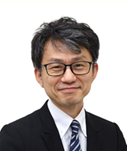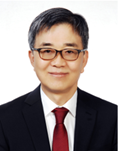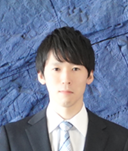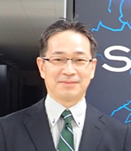| PSLO-KN-1 |
| Minyou
Ye (University of Science and Technology of China, China) |
| Hydrogen
Isotope Behavior in Tungsten and RAFM Steels |

|
|
|
|
|
|
| Prof.
Minyou Ye was born in 1962 in China. He is a Chair Professor in University of
Science and Technology of China (USTC). He received the Doctor of Science
degree from Institute of Plasma Physics, the Chinese Academy of Sciences in
1991, and from Nagoya University in 2001. He had been at Graduate School of
Engineering in Nagoya University as an Assistant Professor from 1994 to 2001.
He worked in Max-Planck Institute for Plasma Physics, Germany from 2001 to
2011. He is interested in edge plasma physics in magnetically confined fusion
devices, plasma-material interactions and fusion reactor design. He was
nominated by the Ministry of Sciences and Technology of China as a Chief
Scientist for two projects (1. Studies of Fusion Experimental Reactor Design;
2. Development of System Code and Optimization of Design for Fusion Reactor). |
|
|
| PSLO-KN-2 |
| Guang-Hong
Lu (Beihang University, China) |
| Beneficial
Effects of Helium in Tungsten in Context of Fusion Plasma and Wall
Interactions |

|
|
|
|
|
|
| Guang-Hong
Lu was born in 1969 in China. He received the Doctor of Material Science
degree from Tokyo University in 2001. Since 2006, he is a Professor of School
of Physics at Beihang University. He is interested in defects in metals and
metallic materials science, such as radiation materials, structure-property
relationship, and microstructure design of materials especially for fusion
applications. He is the dean of School of Physics at Beihang University. He
is a member of the Editorial Board of the journal Nuclear Materials and
Energy, and a committee member of International Conference on the Plasma
Facing Materials & Components for Fusion Application and International
Conference on Computer Simulation of Radiation Effects in Solids. |
|
|
| PSLO-KN-3 |
| Shin
Kajita (The University of Tokyo, Japan) |

| Effect
of co-deposition on helium plasma irradiation to tungsten |
|
|
|
|
|
|
|
| Shin
Kajita was born in Nagoya, Japan, in 1977. He received the Doctor of
Engineering degree from the University of Tokyo, Tokyo, Japan, in 2005. He is
currently a professor at the Graduate School of Frontier Sciences, The
University of Tokyo. His current research interests include plasma
diagnostics using laser and spectroscopy, plasma-material interaction in the
fusion environment, and application of plasma-induced metallic nanostructures
for various purposes including photoelectrochemistry. |
|
|
| PSLO-KN-4 |
| Ivo
Classen (Dutch Institute For Fundamental Energy Research, The Netherlands) |
| Overview
of plasma heat exhaust studies in the DIFFER linear devices |

|
|
|
|
|
|
| Ivo
Classen was born in 1978 in the Netherlands. He obtained his degree of doctor
from the Eindhoven University of Technology in 2007. He has extensive
experience in plasma diagnostic development and experimental investigation of
a broad range of core and edge plasma instabilities. Currently, he is group
leader of the ‘Plasma Edge Physics and Diagnostics’ group at the Dutch
Institute for Fundamental Energy Research (DIFFER). The PEPD group develops
novel plasma diagnostics, focusing on the investigation of the physics and
chemistry of divertor detachment in both linear devices (Magnum-PSI) and
tokamaks (TCV, MAST-U). |
|
|
| PSLO-KN-5 |
| Kyu-Sun
Chung (Hanyang University, Republic of Korea) |
| Review
on DiPS-2 as a Linear Plasma Device: Source, Diagnostics, Physics and PMI |

|
|
|
|
|
|
| Kyu-Sun
Chung was born in 1957 in Korea. He received a Ph.D. degree from
Massachusetts Institute of Technology in 1989. He had been a faculty member
of College of Engineering of Hanyang University for 33 years from 1989 to
2022, and has become an emeritus
professor since September 1, 2022. He has been a Fellow of the School of
Engineering of the University of Tokyo since 2010. His research area is the
plasma diagnostics using various electric probes, especially Mach probes,
which measures plasma flows with two separate directional electric probes,
along with various laser-aided plasma diagnostics such as LIF, LTS and LPD.
He worked for various linear plasmas devices such as PISCES(UCLA), DiPS-1
& 2(HU), MP^2(NFRI), MAP-2(U. Tokyo), NAGDIS-2(Nagoya U.), and
VEHICLE(NIFS) along with early theoretical study on Q-machine. He worked for
Korean Fusion Program as a director of a few research centers such as
cEps(Center for Edge Plasma Science), DiPS(Dust interactions with Plasmas and
Surfaces), cimpL(Center for interactions of Material with Plasmas). He also
served Korean government as an expert member in national fusion program
(National Science and Technology Committee) and national fission program
(Korea Institute of Science &Technology Evaluation & Planning) along
with the service for International Fusion Research Council as a member of
subcommittee of Atomic & Molecular Data for PSIs of Fusion Devices(IAEA). |
|
|
| PSLO-KN-6 |
| Hongbin
Ding (Dalian University of Technology, China) |
| Laser-induced
breakdown spectroscopy for wall diagnosis in nuclear fusion devices |

|
|
|
|
|
|
| Professor
Dr. Hongbin Ding is working at Material Modification Laboratory by Laser,
Electron and Ion Beams, Chinese Ministry of Education, School of Physics,
Dalian University of Technology. He received his PhD in summa cum laude from
University of Basel, Switzerland. He was a visiting-research fellow in
Bristol University supported by The Royal Society-British Petroleum Research
Fellowships in 1998. He was awarded JOSEF PLIVA Prize in 2002 in 17th
International Conference on High Resolution Molecular Spectroscopy, and
Outstanding Contribution Award in LIBS in 2020 by LIBS Committee of China
Society of Optical Engineering. Professor Ding has published more than 180
peer review papers in leading scientific journals such like Nature
Communication, JACS, Astrophysics Journal, Appl. Phys. Lett., J. Chem. Phys,
SAB, JAAS et al; Professor Ding also holds more than 30 patents in the laser
spectroscopic plasma diagnostics and the plasma materials interaction
research fields. Professor Ding’s recent research interests are developing of
laser spectroscopy (LIBS, PLIF, CRDS, REMPI) and laser Thomson scattering
(LTS) as well as molecular beam mass spectrometry (MB-TOF MS) approaches for
characterizing plasma physics and chemistry; In particular, developing laser
induced breakdown spectroscopy (LIBS) for studying fusion plasma-wall
interaction (PWI) and for characterizing the electron temperature and density
as well as the transient species (such radicals, molecular ions and anions)
in plasmas. |
|
|
| PSLO-I-1 |
| Yuan
Yue (Beihang University, China) |
| Performance
of tungsten materials under sequential high heat flux loading and deuterium
plasma exposure |

|
|
|
|
|
|
| Yue
Yuan was born in 1988 in China. She received her PhD in materials science and
engineering from Tsinghua University in 2013. In the same year, she joined
the School of Physics at Beihang University in Beijing, China. She was a
visiting scholar at Max-Planck-Institute for Plasma Physics in 2012 and
Forschungszentrum Juelich GmbH in Germany in 2015. Her main interests include
plasma-wall interactions, radiation damage in nuclear materials, hydrogen and
helium in metals, and advanced nuclear materials. She is a member of the
Editorial Board of the journal Nuclear Fusion. |
|
|
| PSLO-I-2 |
| Yong
Sup Choi (Korea Institute of Fusion Energy, Korea) |
| Development
of Plasma Application Technology in IPT-KFE |

|
|
|
|
|
|
| Yong
Sup Choi was born in 1973 in Korea. He received the Doctor of Engineering
degree from Hanyang University in 2005. He had spent his career at Samsung
SDI from 2005 to 2011 and had been involved in the research on development of
plasma equipment for Plasma Display Panel and Organic Light Emitting Diode
production. Since 2011, he is a senior researcher of Korea institute of
Fusion Energy. He is general director of Institute of Plasma Technology at
Korea institute of Fusion Energy from 2021. He is interested in plasma
material interaction, new plasma sources for industrial application, and
thermal plasma for waste treatment. Dr. Yong Sup Choi is a member of the
Korean Society for Precision Engineering and the Korean Vacuum Society in
Korea. |
|
|
| PSLO-I-3 |
| Long Cheng (Beihang
University, China) |
| Mechanism
of blistering and retention in recrystallized tungsten exposed to deuterium
plasma in the linear plasma device STEP |

|
|
|
|
|
|
| Long
CHENG was born in 1988 in China. He received the Doctor degree in condensed
matter physics from Beihang University in 2017. Since 2021, he is an
associate professor of School of Physics at Beihang University. He is
interested in hydrogen in metals, linear plasma devices, and plasma-material
interactions for fusion applications. He is a member of the Early Career
Editorial Board of the journal Nuclear Materials and Energy. |
|
|
| PSLO-I-4 |
| Dogyun Hwangbo
(University of Tsukuba, Japan) |
| Spectroscopic
measurement of deuterium recycling at molybdenum surfaces |

|
|
|
|
|
|
| Dogyun
Hwangbo was born in 1989 in South Korea. He received the Doctor of
Engineering degree from Nagoya University in 2019. Since 2019, he is an
Assistant Professor of Faculty of Pure and Applied Sciences at the University
of Tsukuba, Japan. He is interested in edge plasma physics in magnetically
confined fusion devices, such as plasma detachment associated with atomic and
molecular processes, and convective plasma transport, and plasma-material
interactions. |
|
|
| PSLO-I-5 |
| Yuki Hayashi (National
Institute for Fusion Science, Japan) |
| Study
on effects of neutral particle behavior on detached plasma formation using
linear plasma device and modeling |

|
|
|
|
|
|
| Yuki
Hayashi was born in 1990 in Japan. He received the Doctor of Engineering
degree from Nagoya University in 2018. He is an Assistant Professor of
Transports in Plasma Multi-phase Matter System Unit in National Institute for
Fusion Science. He is interested in edge plasma physics in magnetically
confined fusion devices, such as plasma detachment associated with atomic and
molecular processes, interaction between heat pulse and detached plasma, and
neutral particle behavior in divertor region. |
|
|
| PSLO-I-6 |
| Hirohiko
Tanaka (Nagoya University, Japan) |
| Newly
developed integrated transport code for detached plasma simulation |

|
|
|
|
|
|
| Hirohiko
Tanaka was born in 1986 in Gifu, Japan. He received the Doctor of Engineering
degree from Nagoya University in 2011. Since 2022, he is an Associate
Professor of Institute of Materials and Systems for Sustainability at Nagoya
University. He is interested in edge and divertor plasma physics in
magnetically confinement fusion devices, such as convective cross-field
plasma transport, divertor plasma detachment, and the effects of resonant
magnetic perturbations. |
|
|
| PSLO-I-7 |
| Satoshi Togo (The
University of Tsukuba, Japan) |
| Development
of a Plasma Fluid Model Covering a Range of Coulomb Collisionality by
Comparison with a Particle-in-cell Model |

|
|
|
|
|
|
| Satoshi
Togo was born in 1988 in Japan. He earned his PhD at the University of Tokyo
in 2016 and then worked as a post-doc researcher at the Plasma Research
Center, University of Tsukuba, Japan. Until then, he focused on improving
SOL-divertor plasma fluid modeling. In 2018, he was employed as one of the
ITER-Monaco fellows, and focused on investigating plasma edge turbulence for
2 years. Since December 2020, he has been working as an assistant professor
at the Plasma Research Center, University of Tsukuba, Japan. |
|
|
| PSLO-I-8 |
| Hiroaki Nakamura
(National Institute for Fusion Science, Japan) |
| Verification
of Birth Process of Primordial Organic Molecules in the Solar System from
Molecular Clouds using Molecular Dynamics Simulations |

|
|
|
|
|
|
Hiroaki
NAKAMURA received Ph.D. degrees from the University of Tokyo, Japan in 1996
in physics. In July 1998, he has joined Theory and Computer Simulation Center
in National Institute for Fusion Science in Japan (NIFS) as a Research
Associate. He was a Visiting Assistant Professor in Keiko University, and he
was invited to Institut Europen de Chimie et de Biologie (IECB) in France as
a CNRS Post Rouge (Visiting Scientist) and to the University of Texas at
Austin in USA as a Visiting Professor.
He is currently a Professor in Transports in Plasma Multi-phase Matter
System Unit in NIFS, and a visiting Professor in Department of Electrical
Engineering, Nagoya University in Japan. His research interest is in
astrobiology, optical vortex, and plasma material interaction. |
|
|
| PSLO-I-9 |
| Yoshihisa Fujita (Nihon
University, Japan) |
| Angular
Momentum Coupling of Tilted Gaussian Beam with Waveguide Mode |

|
|
|
|
|
|
| Yoshihisa
Fujita was born in 1989 in Japan. He received the Doctor of Engineering
degree from Nagoya University in 2016. Since 2023, he is an Assistant
Professor of College of Industrial Technology at Nihon University. He is
interested in numerical analysis for electromagnetic wave propagation,
eigenvalue problems, and surrogate models. Recently, he has been engaged in
research on optical vortex excitation using waveguides. |
|
|
| PSLO-I-10 |
| Quan Shi (The University
of Tokyo, Japan) |
| A
simple method for modifying the surface morphology of various semiconductors
and its application in random lasing |

|
|
|
|
|
|
| Quan
Shi was born in 1991 in Japan. He received the Doctor of Engineering degree
from Nagoya University in 2021. After that, he spent two years in Nation
Institute for Fusion Science as a postdoc. Now he is a special appointment
researcher in the University of Tokyo. He is interested in edge plasma
physics in magnetically confined fusion devices especially the
plasma-material interaction. He is also working on the application of plasma
treated semiconductor. He is a member of the Japan Society of Applied Physics
in Japan. |
|















